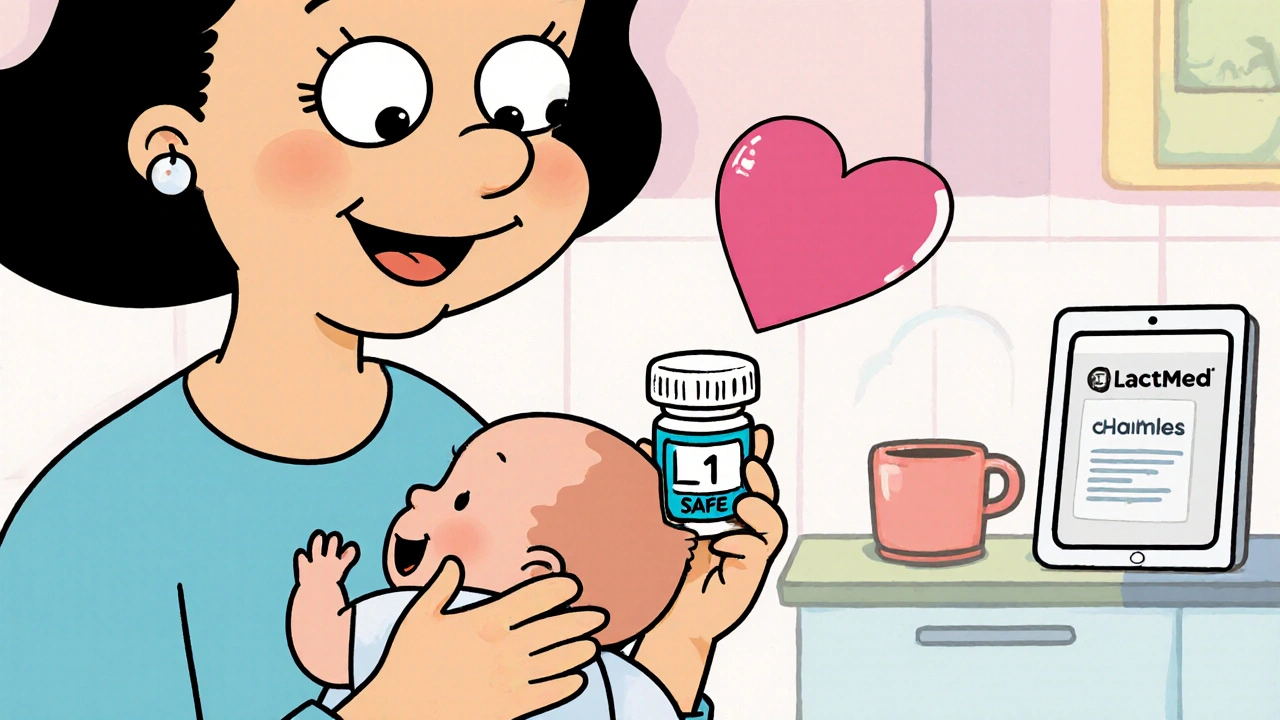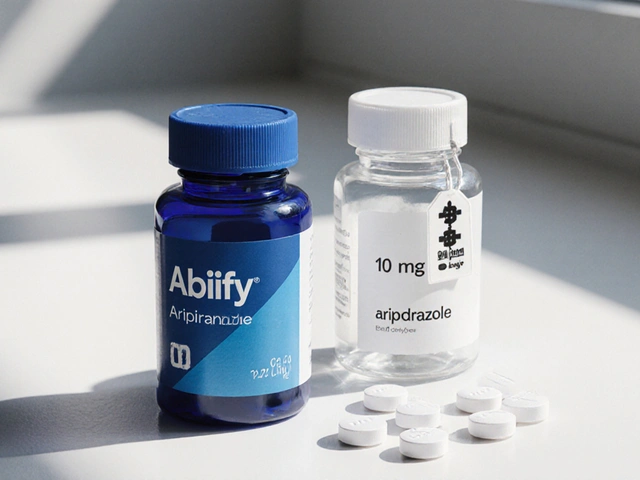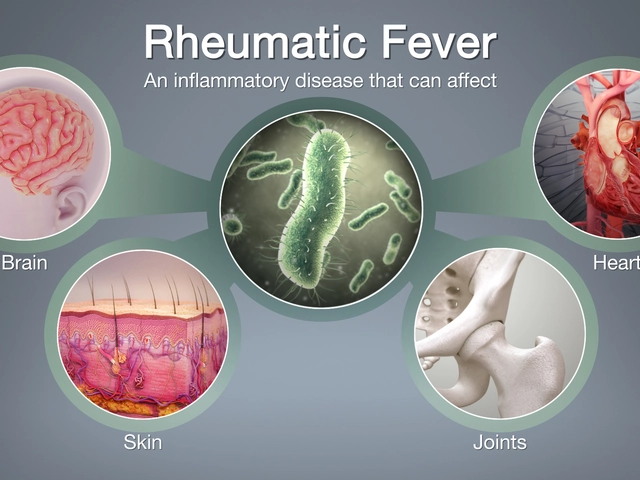When you're breastfeeding, taking a pill for pain, anxiety, or an infection isn't just about you. It's about your baby too. Every time you swallow a medication, a small amount can end up in your breast milk. But here's the truth most people don't tell you: most medications are safe to take while breastfeeding. The fear of harming your baby often leads mothers to stop nursing when they don't need to. In fact, fewer than 2% of infants experience any real side effects from medication exposure through breast milk.
How Medications Get Into Breast Milk
Medications don't jump into your milk like magic. They travel through your bloodstream and cross into breast milk by a process called passive diffusion. Think of it like a sponge soaking up water - the drug moves from where it's more concentrated (your blood) to where it's less concentrated (your milk). Not all drugs do this equally. Four key things decide how much gets through:- Molecular weight: Drugs under 200 daltons slip through easily. Most common meds like ibuprofen or amoxicillin are small enough.
- Lipid solubility: Fatty drugs (like some antidepressants) cross more readily than water-soluble ones.
- Protein binding: If a drug sticks tightly to proteins in your blood (over 90%), it can't get into milk. Warfarin and diazepam are examples - they barely show up in breast milk.
- Half-life: Drugs that stay in your system longer (over 24 hours) have more time to build up in milk. Shorter half-life drugs like acetaminophen clear out fast.
There's also something called ion trapping. Your blood is slightly more alkaline (pH 7.4) than breast milk (pH 7.2). Weakly basic drugs - like lithium or certain antidepressants - get pulled into the milk and stick there. That's why lithium levels in milk can be 2 to 10 times higher than in your blood. It's not dangerous for everyone, but it needs monitoring.
Right after birth, your body makes colostrum. The gaps between milk-making cells are wider then, so more drugs can sneak through. But here's the good news: colostrum volume is tiny - only 30 to 60 milliliters a day. By day five, your milk supply ramps up, the gaps close, and exposure drops significantly.
The L1 to L5 Safety System
Dr. Thomas Hale created the most trusted system for judging medication safety during breastfeeding. It's simple:- L1 - Safest: No known risk. Examples: ibuprofen, acetaminophen, penicillin.
- L2 - Probably Safe: Limited data, but no adverse effects reported. Examples: sertraline, ciprofloxacin, fluoxetine.
- L3 - Possibly Safe: Limited data, potential risk. Use only if benefits outweigh risks. Examples: lithium, diazepam, some statins.
- L4 - Possibly Hazardous: Evidence of risk. Use only if no safer alternative exists. Examples: cyclosporine, doxycycline.
- L5 - Contraindicated: Proven risk. Avoid completely. Examples: chemotherapy drugs, radioactive iodine.
This system is used by doctors, pharmacists, and lactation consultants worldwide. It’s not perfect, but it’s the best tool we have. And here’s what matters most: L1 and L2 drugs make up the vast majority of prescriptions given to breastfeeding moms. You’re not likely to need an L4 or L5 unless you’re dealing with serious illness.
Common Medications and What’s Safe
Let’s cut through the noise. Here’s what most mothers actually take - and whether it’s safe:- Analgesics (pain relievers): Acetaminophen and ibuprofen are top choices. They pass into milk in tiny amounts and are even given directly to newborns in hospitals. Avoid aspirin - it can cause Reye’s syndrome in babies.
- Antibiotics: Penicillin, amoxicillin, cephalexin - all safe. Even clindamycin and metronidazole are fine in standard doses. Only tetracycline (like doxycycline) needs caution, and even then, short courses are usually okay.
- Psychotropics (antidepressants, anti-anxiety): Sertraline is the gold standard. It has the lowest transfer rate and the most safety data. Fluoxetine is also common, but it builds up in babies over time. Avoid benzodiazepines like alprazolam unless absolutely necessary - they can make babies sleepy or irritable.
- Thyroid meds: Levothyroxine is safe. Your body doesn’t even transfer much of it into milk.
- Birth control: Progestin-only pills are safe. Estrogen-containing pills can reduce milk supply, so they’re usually avoided in the first few months.
One big myth: antibiotics kill good bacteria in your baby’s gut. That’s true - but so does your own gut microbiome. The benefits of continuing breastfeeding far outweigh any minor changes in gut flora. Most babies adjust quickly.
When Timing Matters
You don’t have to wait hours after taking a pill to nurse. Timing can reduce exposure - but not always in the way you think.If you take a single daily dose, take it right after breastfeeding. That way, the highest drug level in your blood happens when your baby isn’t feeding. For meds taken multiple times a day, take them just before your baby’s longest sleep stretch - usually after the nighttime feeding. That gives your body time to clear the drug before the next feed.
For example: If you’re on sertraline twice a day, take your morning dose after the first feeding and your evening dose right after the last feeding. Your baby sleeps through the night - and by morning, most of the drug is gone.
Topical creams? Generally safe - unless you apply them directly to your nipple. Then wash them off before feeding. Inhalers? Almost zero transfer. Patches? Usually fine, but check with your doctor. IV drugs? Higher exposure, but still often safe if the drug is low-risk.
What to Watch For in Your Baby
Most babies show no reaction. But if you notice any of these, call your pediatrician:- Unusual sleepiness or difficulty waking to feed
- Excessive fussiness or crying
- Poor feeding or weight gain
- Rash or unusual skin changes
- Diarrhea or vomiting
These signs are rare. But if they appear, it doesn’t mean you have to stop breastfeeding. It means you need to reassess the medication. Maybe switch to a safer option, adjust the dose, or change the timing.

Best Resources for Real Answers
Don’t guess. Don’t rely on outdated websites or well-meaning but uninformed relatives. Use these trusted tools:- LactMed: Free, online, updated daily by the U.S. National Library of Medicine. Covers over 4,000 drugs, 3,500 with infant exposure data. Used by 1.2 million people a year.
- Medications and Mothers’ Milk by Dr. Thomas Hale: The printed guide with L1-L5 ratings. More practical for quick decisions.
- MotherToBaby: Free phone and chat service staffed by experts. They handle 15,000 calls a year. Call 1-866-626-6847 (U.S.) or visit their website.
- LactMed On-the-Go app: Free app version of LactMed. Works offline. Great for quick checks at the pharmacy or doctor’s office.
These aren’t just for doctors. You can use them too. If your provider says “avoid breastfeeding,” ask them to check LactMed first. A 2021 survey found that 78% of lactation consultants see at least one mother per month who was wrongly told to stop nursing because of medication.
What’s Changing in 2025
The science is moving fast. In 2022, the FDA pushed drug companies to include breastfeeding women in clinical trials. Before, most new drugs had no data for nursing moms. Now, that’s changing.Researchers are also starting to look at biologics - newer drugs for autoimmune diseases and cancer. Only 12 out of 85 FDA-approved biologics have solid breastfeeding data. That’s a gap. But studies like the InfantRisk Center’s MilkLab project are filling it. They’ve measured actual drug levels in breast milk from over 1,250 mothers.
By 2030, personalized breastfeeding pharmacology might be normal. Imagine a simple blood test that tells you how fast you metabolize a drug - and how much will end up in your milk. That’s already being tested.
For now, the message is clear: breastfeeding and medications can coexist. Most of the time, you don’t have to choose between your health and your baby’s nutrition. You just need the right information.
When to Seek Help
If you’re unsure about a medication, don’t wait. Talk to:- Your OB/GYN or primary care provider
- A certified lactation consultant (IBCLC)
- A pharmacist who specializes in maternal health
- MotherToBaby for free expert advice
There’s no shame in asking. You’re not risking your baby’s health by taking medicine - you’re risking it by not taking it when you need to. Depression, high blood pressure, infections - these are serious. And breastfeeding doesn’t make you weak. It makes you strong enough to manage both your health and your baby’s.







luke young
November 22, 2025 AT 18:30Man, I wish I had this when I was nursing my first kid. So many people told me to stop breastfeeding because of my anxiety med, but turns out sertraline is basically the gold standard? I kept going and my baby turned out fine. Seriously, this post is a lifesaver.
Thanks for laying it all out so clearly.
james lucas
November 23, 2025 AT 02:05okay so i just wanna say i was totally freaked out when i had to take amoxicillin for a sinus infection after my daughter was born-like i thought i was gonna poison her or something-but then i checked lactmed and it was l1?? like what?? i mean i was already pumping and dumping for no reason because my mom said ‘better safe than sorry’ but honestly like 90% of the stuff we take is fine??
also i didnt know about the colostrum thing-like yeah the gaps are wider but the volume is like a shot glass?? that’s wild. i feel less guilty now lol
Nikhil Chaurasia
November 24, 2025 AT 21:04As someone from India, where breastfeeding is deeply cultural but medical advice is often outdated or fear-driven, I must say this is one of the most balanced, scientifically grounded pieces I’ve ever read.
Many mothers here are told to stop nursing if they take even a single pill-often by relatives or even doctors who haven’t updated their knowledge since the 1990s.
Thank you for honoring both the science and the emotional weight mothers carry. This isn’t just information-it’s liberation.
Holly Schumacher
November 25, 2025 AT 22:56Let me just say-this article is dangerously incomplete. You mention sertraline as ‘the gold standard’ but completely ignore the fact that 17% of infants exposed to sertraline show mild withdrawal symptoms like jitteriness or sleep disruption in the first two weeks. And you say ‘most meds are safe’-but ‘safe’ isn’t the same as ‘risk-free.’
What about long-term neurodevelopmental outcomes? You cite LactMed but don’t mention that it’s crowd-sourced and not peer-reviewed. And you gloss over the fact that biologics like Humira have zero infant exposure data? This is misinformation dressed up as reassurance.
And don’t even get me started on the ‘just wash off nipple cream’ advice. If you’re using a steroid cream, even 0.1% absorption over months can suppress an infant’s HPA axis. This post reads like a pharmaceutical ad.
Michael Fitzpatrick
November 27, 2025 AT 21:19Just wanted to say I’ve been breastfeeding for 14 months now and have taken everything from ibuprofen to Zoloft to antibiotics for a UTI-never once stopped. My kid is now a healthy 18-month-old who walks, talks, and eats everything.
People act like breastfeeding and meds are a war you have to win, but honestly? It’s more like a dance. You adjust your steps, you listen to your body and your baby, and you don’t panic over every little thing.
Also, the timing tip? Game changer. Taking my meds right after the night feeding? My baby sleeps like a log. I sleep like a human. Win-win.
And yeah, LactMed is my bible now. I’ve got it bookmarked on my phone. I even showed my OB and she was like ‘wow, you’re more informed than half my residents.’
Shawn Daughhetee
November 29, 2025 AT 03:29thank you for this. i was so scared to take anything after my c section. i thought i had to just suffer through the pain. now i know i can take tylenol and still be a good mom. also the part about colostrum? mind blown. i had no idea it was so little at first. i was pumping and dumping for days for no reason. this post saved my sanity
Justin Daniel
November 29, 2025 AT 08:48Wow. This is the kind of post that makes you want to hug strangers on the internet.
Let’s be real-most of the fear around meds and breastfeeding comes from a place of love. Moms are terrified of hurting their babies. But the medical system doesn’t help. It’s either ‘avoid everything’ or ‘it’s fine, don’t worry’ with zero nuance.
So this? This is the middle path. The real talk. The science with soul.
Also, I’m laughing because I just told my sister to stop breastfeeding because she took a Z-pack. She’s gonna be so mad at me now. Thanks for the gentle public shaming, internet.
Melvina Zelee
November 29, 2025 AT 22:30you know what’s wild? we treat breastfeeding like it’s this fragile, sacred thing that can’t handle a single pill... but we don’t treat it like the miracle it is.
your milk isn’t just food-it’s a living ecosystem. it has antibodies, enzymes, probiotics, even your own DNA fragments. it’s evolved to handle small exposures. your body isn’t trying to poison your baby-it’s trying to protect them.
the real tragedy isn’t a baby getting a tiny bit of ibuprofen-it’s a mother being told she has to choose between being healthy and being a good mom.
we’ve turned motherhood into a test of endurance instead of a partnership between two bodies that know how to work together.
and honestly? if your baby gets a little sleepy after you take a benzo? maybe they just needed to sleep. maybe you needed to rest.
we don’t need more rules.
we need more trust.
in our bodies.
in our babies.
in each other.